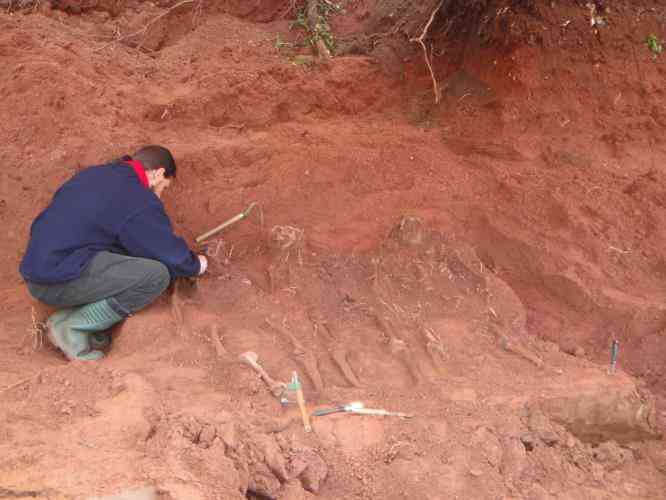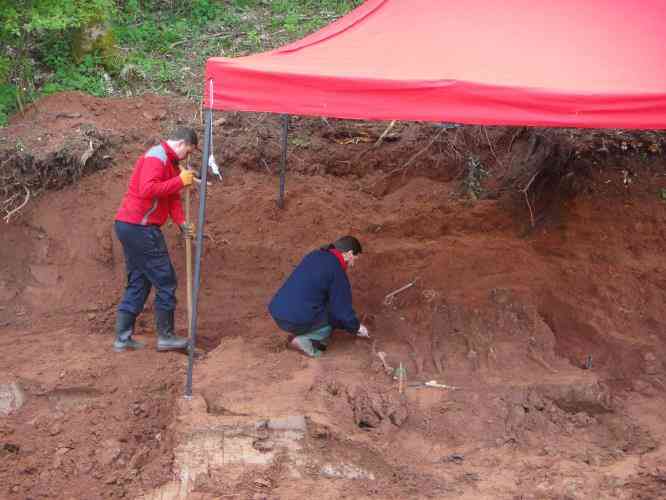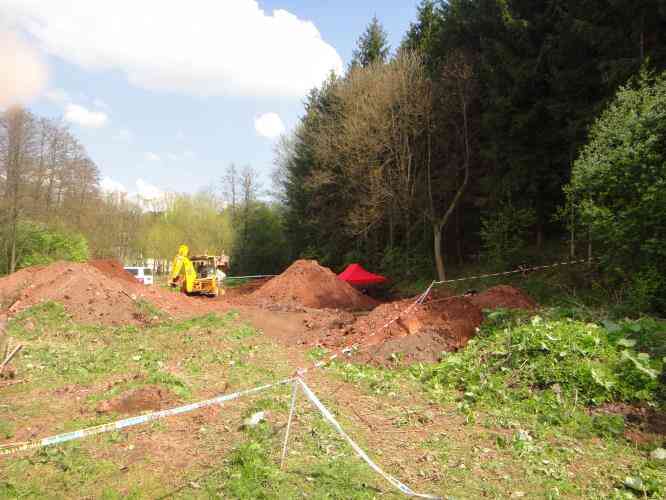To ty kriminalisté neměli do čeho píchnout? Tohle bych viděl spíše na práci pro archeologi novověkých dějin. Že by politické zadání od našich zaprodanců co nám chtějí otloukat o hlavu, jak jsme byli špatní na ty hodné němce?
April 24, 2014 Bodies of executed Germans
Categories: Finds and rescue research in the Czech Republic , The end of the war in the Czech Republic , Calendar
Seven years ago, the Hradec Králové regional forensic scientists focused on an area that historical sources and witnesses describe as the site of the mass grave of five Germans shot in June 1945. It was located in the village of Rudník in the Trutnov region.
The goal of the police was to find out if the information about the dead Germans was really true. They had to go to the scene to initiate an investigation into the prosecutor's office. It was handed over by a representative of the municipal office in Rudník.
Forensic scientists actually discovered human remains on the spot. "After about three weeks of uncovering the batch, which was carried out by the village in cooperation with archaeologists of the Krkonoše Museum in Vrchlabí, criminologists began to uncover the soil in a locality specified by historians and archaeologists with the help of heavy machinery. After a few hours of work, they actually came across the skeletal remains of one human body, "said police spokeswoman Ivana Ježková at the time.
At that moment, an archaeologist equipped with a brush and other tools set to work. He was joined by a team of forensic scientists. First they discovered the remains of three people, then two more. The grave of the two victims was about thirteen meters from the first finding.
The skeletons were later transported to the Criminalistics Institute in Prague, where they were examined by anthropologists. "With regard to the finding, the investigator initiated actions in criminal proceedings on suspicion of committing murder on several persons, of course by a hitherto unknown perpetrator," Ježková said at the time.
In mid-May 2014, word spread that the executions of Sudeten Germans in Rudník probably had another victim. It was a German amateur Alois Baruschka, who in June 1945 received a sentence for keeping weapons. He was buried at Stříbrný potok, where dogs used to be buried. But it was not written about anymore…
Police investigated the investigation three years later, saying that the Czechs who shot the Sudeten Germans did not commit a crime. Criminalists known to criminals executed men over the age of forty who kept weapons. According to the laws of the time, however, the Czechs did not commit anything criminal.
"It has not been confirmed that it was a crime. The persons who ordered and carried out the execution acted in accordance with the laws, decrees and regulations in force at the time, "said Lenka Burýšková, a spokeswoman for the Hradec Králové regional police.
The village laid the bodies of the dead Germans in a common grave in the local cemetery…



Sources: www.zachranny-kruh.cz, www.idnes.cz, www.policie.cz, www.novinky.cz
Photo: Police of the Czech Republic
The article is included in categories:
- Archive of articles > Archaeology > Finds and rescue research in the Czech Republic
- Archive of articles > Wars > Second World War > The end of the war in the Czech Republic
- Archive of articles > Calendar
Post
Taky mi to přišlo zajímavé, že se tomuto musela věnovat Policie... 
zajímavý článek. Poslal jsem kamarádovi do Rudníku. Jsem zvědavý jestli neví něco víc.
V té době byl Němec a Němec. To co se ve 45tým dělo (viz Habrmanův mlýn, Krajina ve stínu), bylo hrozný. Lidi se mstili a bohužel i na obyčejných lidech. Nikoho nesoudím, taková hnusná doba prostě byla.
Myslím, že ani těch 5 mrtvých nebyli vojáci. V té době stačilo, aby jsi měl německou manželku, nebo manžela.
Snad už v budoucnu nepřijde nějaký zfanatizovaný blázen, který bude chtít ovládnout svět.
Ať se Vám daří a hodně zdraví, kolegové. 







